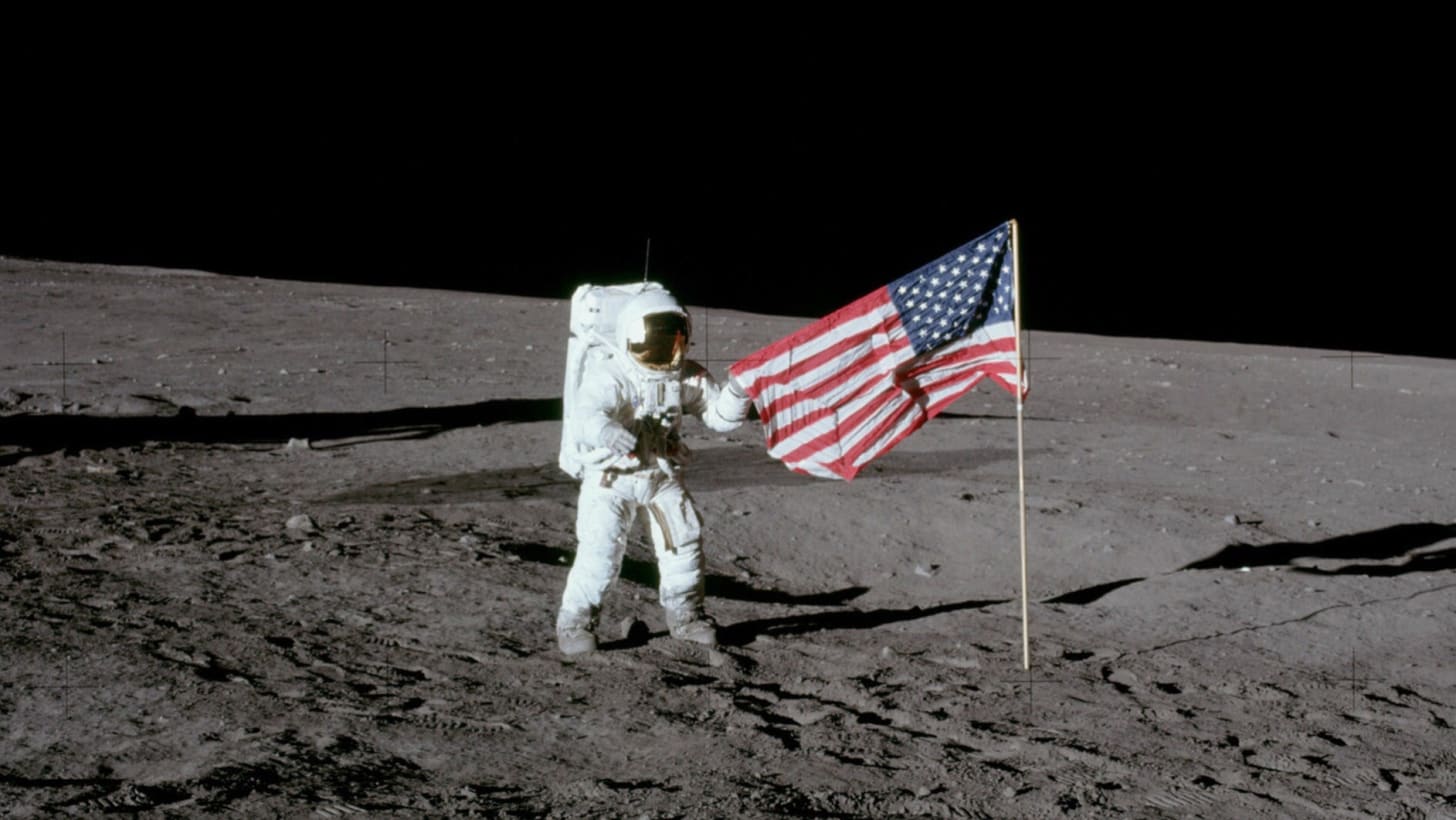On This Day in 1969: Neil Armstrong Walks on the Moon and Redefines Human Possibility
More than a Cold War victory, Armstrong’s small step proved the power of quiet resolve and radical imagination
Moon Landing Marked More Than Just a Win in the Space Race
On this day in 1969, Neil Armstrong became the first human to step onto the Moon. Many viewed it as a triumph of democracy over communism, a calculated response to the Soviet Union's dominance in space. But look closer and you see something more meaningful. It was not simply a win over another country; it was a win for the idea that calm minds and steady hands can do the impossible.
This was not the work of loud leaders or camera-hungry astronauts. It was the legacy of one quiet man, shaped by a childhood obsession with flight, years of technical mastery, and a life touched by personal tragedy. Armstrong’s journey reminds us that history is not only made by those who shout, but also by those who listen, think and act with purpose.
A Boy in a Plane, a World in the Making
It started in 1936, in Ohio. A six-year-old boy named Neil thought his father was driving him to Sunday school. Instead, they arrived at an airfield. The boy climbed into a plane for the first time. He did not scream or panic. He smiled. Even as his father looked uneasy, the boy only felt at home.
That feeling never left him. He was drawn to flight not just as an experience, but as a subject. He studied it, flew in war zones, tested experimental jets and learned the science behind the sensation. While others chased headlines, Armstrong chased understanding.
By 1950, he was a naval aviator. In Korea, he flew 78 combat missions. In one, his plane was hit by ground fire, clipped a pole and lost part of a wing. He kept it in the air just long enough to reach friendly territory, then ejected. Calm and controlled. That was Armstrong. The Navy called it “exceptionally fast headwork.” No panic, just process.
Composure, Even in Grief
After the war, he returned to Purdue University and completed his engineering degree. He became a test pilot, flying machines that pushed the boundaries of what human bodies and minds could handle. But the part that defined him came in 1962, when his young daughter Karen died of a brain tumour.
He did not collapse or disappear. He turned to his work with greater focus. A family friend later said that he buried his grief in the same discipline that made him a great pilot. That same year, Armstrong submitted his application to NASA’s astronaut programme, one month after the official deadline. NASA made an exception. His reputation preceded him.
He did not apply to become famous. In fact, he believed he had been born a generation too late, that the big milestones had already passed with Lindbergh and Earhart. He thought he had missed history. He had not.
Kennedy’s Dream, NASA’s Gamble
In 1962, President John F. Kennedy committed America to landing a man on the Moon before the decade’s end. He needed public support and massive funding. His speech at Rice University was crafted to inspire, and it worked. Congress approved $25 billion, the equivalent of over $200 billion today.
Behind the scenes, German rocket scientist Wernher von Braun, once part of the Nazi war machine, became instrumental in designing the Saturn V rocket. Failures were common. Rockets exploded or refused to launch. Still, von Braun persisted, convinced that the Moon was only the beginning and that Mars could follow.
In the background, Armstrong trained. He took nothing for granted. When Apollo 11 was announced, he was chosen as commander. The one who had stayed calm in gunfire, who solved equations mid-air, who carried grief without complaint, would now carry the hopes of the world.
One Step, Forever Watched
At 02:56 GMT on July 21, 1969, Neil Armstrong opened the hatch of the lunar module. Roughly 600 million people, a fifth of the Earth’s population at the time, watched from their homes. The grainy black-and-white feed showed a figure descending the ladder.
He stepped onto the Moon and said, “That’s one small step for man, one giant leap for mankind.” For decades, he would insist that he had actually said, “That’s one small step for a man.” The signal had simply cut the “a”. Whether he was right or wrong barely matters now. The words became iconic.
Armstrong had once believed that the great milestones of flight had passed him by. Now, he had created one. What defined him was not the statement, but the manner of it. No fist in the air, no patriotic outburst. Just quiet certainty and steady motion. He walked like someone walking into another room.
A Moment of Unity, Never Repeated
What followed was adulation. Armstrong, Aldrin and Collins returned as heroes. Yet the Moon landing was more than a mission accomplished. It was a rare moment of global synchrony. Hundreds of millions of people, across time zones and political lines, held their breath at the same time.
That kind of collective experience has never truly been repeated. It is easy to romanticise the event as a snapshot of human excellence, and in some ways, it was. But the core truth remains this; one man, calm and deliberate, prepared his entire life to make one small step. He did it not for applause, but for what lay beyond.
On this day in 1969, Neil Armstrong did not simply land on the Moon. He landed in our collective memory as the embodiment of quiet courage, of patient brilliance and of what happens when the right person meets the right moment.


